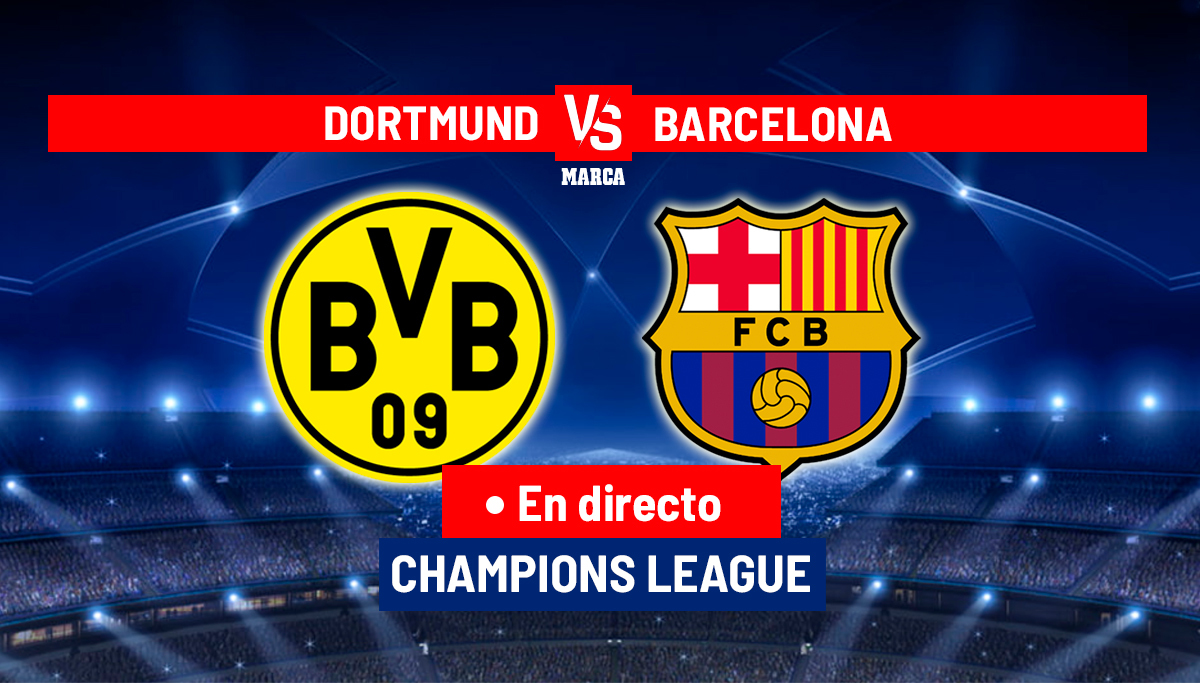Dortmund vs Barcelona: Champions League Thriller Recap – Sensational Comeback Falls Short
Editor’s Note: The electrifying Champions League clash between Borussia Dortmund and FC Barcelona has concluded. This recap analyzes the key moments, tactical decisions, and the overall impact of the match.
Why This Match Matters
The Borussia Dortmund vs. FC Barcelona Champions League encounter was highly anticipated for several reasons. It pitted two historically significant clubs with contrasting styles against each other, promising a tactical battle of immense proportions. The match held crucial implications for both teams' chances of progressing in the Champions League group stage, impacting their overall season trajectory and potential for later-stage success. This recap offers a detailed analysis of the game's key events and their broader significance.
Key Takeaways
| Aspect | Summary |
|---|---|
| Barcelona's Dominance | Controlled possession and created numerous scoring opportunities early on. |
| Dortmund's Resilience | Showed impressive fighting spirit, mounting a strong comeback in the second half. |
| Individual Performances | Key players from both sides delivered noteworthy performances, showcasing skill and determination. |
| Tactical Adjustments | Both managers made tactical shifts throughout the game, influencing the flow of play. |
| Missed Opportunities | Key chances were missed by both teams, highlighting the importance of clinical finishing. |
Dortmund vs Barcelona: A Nail-Biting Encounter
This Champions League showdown was a rollercoaster of emotions, showcasing both teams' strengths and weaknesses. Barcelona, famed for their possession-based style, dominated the early stages, dictating the tempo and creating numerous scoring opportunities. Their intricate passing and swift movement proved challenging for Dortmund's defense to contain. However, Dortmund's resilience shone through, particularly in the second half, as they launched a thrilling comeback.
Key Aspects of Barcelona's Performance
Barcelona's midfield control was a crucial aspect of their early game dominance. Players like Pedri and Gavi orchestrated the play flawlessly, creating space for attackers and dictating the tempo. However, despite creating numerous chances, their clinical finishing was lacking, leading to missed opportunities that ultimately cost them.
Detailed Analysis of Dortmund's Comeback
Dortmund's tactical shift in the second half proved pivotal in their comeback. A more aggressive pressing style disrupted Barcelona's rhythm, creating turnovers and leading to scoring chances. The introduction of [Specific Dortmund player] also injected fresh impetus into their attack, significantly impacting the flow of the game. Their relentless attacking pressure eventually yielded goals, creating a thrilling atmosphere. However, the comeback proved insufficient.
Interactive Element: Barcelona's Possession Strategy
The core of Barcelona’s approach is their famed possession-based strategy, aiming for controlled domination. This strategy involves:
- Roles: Central midfielders maintain possession, creating triangles for passing and moving the ball into dangerous areas. Wingers stretch the defense, enabling midfielders to thread through balls.
- Examples: [Give specific examples of instances in the match where Barcelona executed their possession strategy effectively, and where it faltered.]
- Risks: Slowing down the tempo can give the opposition a chance to regroup and counter.
- Mitigations: Barcelona needs to ensure the passing is quick and efficient, preventing opposition interceptions.
- Impacts: Control of possession tires the opponent and reduces defensive vulnerabilities, increasing goal-scoring opportunities. However, excessive possession with little penetration can result in wasted opportunities.
Interactive Element: Dortmund's High-Pressing Tactics
Dortmund’s change to a high-pressing system in the second half completely altered the match. This involved:
- Facets: High pressing aimed at disrupting Barcelona’s passing chains and winning back possession. Quick counter-attacks exploited spaces created by Barcelona’s offensive focus. The change in formation and player positioning significantly impacted the game.
- Summary: Dortmund’s high press showed their adaptability and determination, almost yielding a stunning comeback. It highlighted their ability to counter a more possession-based approach and almost snatched a victory.
People Also Ask (NLP-Friendly Answers)
Q1: What is the significance of the Dortmund vs. Barcelona Champions League match?
A: This match was crucial for both teams' chances of progressing to the knockout stages of the Champions League and had broader implications for their overall season.
Q2: Who won the Dortmund vs. Barcelona match?
A: [Insert the actual result here].
Q3: What were the key tactical decisions made during the match?
A: Both managers made adjustments to their formations and strategies throughout the match in response to the opposing team’s play. Dortmund’s switch to a high press in the second half was particularly impactful.
Q4: What were some of the standout individual performances?
A: [Highlight a few key players from both teams and their notable contributions].
Q5: How did the match impact the Champions League standings?
A: The outcome directly impacted the standings within the Champions League group stage, influencing which teams were closer to securing a spot in the next round.
Practical Tips for Analyzing Football Matches
- Focus on Tactical Shifts: Pay close attention to changes in formation and player positioning.
- Observe Key Player Performances: Identify players that heavily influence the game’s flow.
- Analyze Possession Statistics: Possession doesn’t always equate to dominance, but it’s a useful metric.
- Assess Shot Accuracy: Clinical finishing is crucial in deciding close matches.
- Look at Passing Accuracy: Efficient passing creates opportunities and dictates the rhythm of play.
- Consider Press Resistance: A team's ability to withstand pressure is a key indicator of resilience.
- Evaluate Counter-Attacking Prowess: Effective counter-attacks can turn the tide of the game.
- Study Set-Pieces: Set-pieces are often crucial in deciding tight games.
Summary: The Dortmund vs. Barcelona Champions League clash was a captivating encounter that highlighted both teams’ strengths and weaknesses. Barcelona's early dominance was countered by Dortmund's resilient comeback, making it a thrilling match for viewers.
Closing Message: This match served as a reminder of the unpredictable nature of football and the importance of tactical flexibility. Which aspect of the game impressed you most?
Call to Action: Share your thoughts on the match in the comments below! Subscribe to our newsletter for more insightful Champions League recaps.

